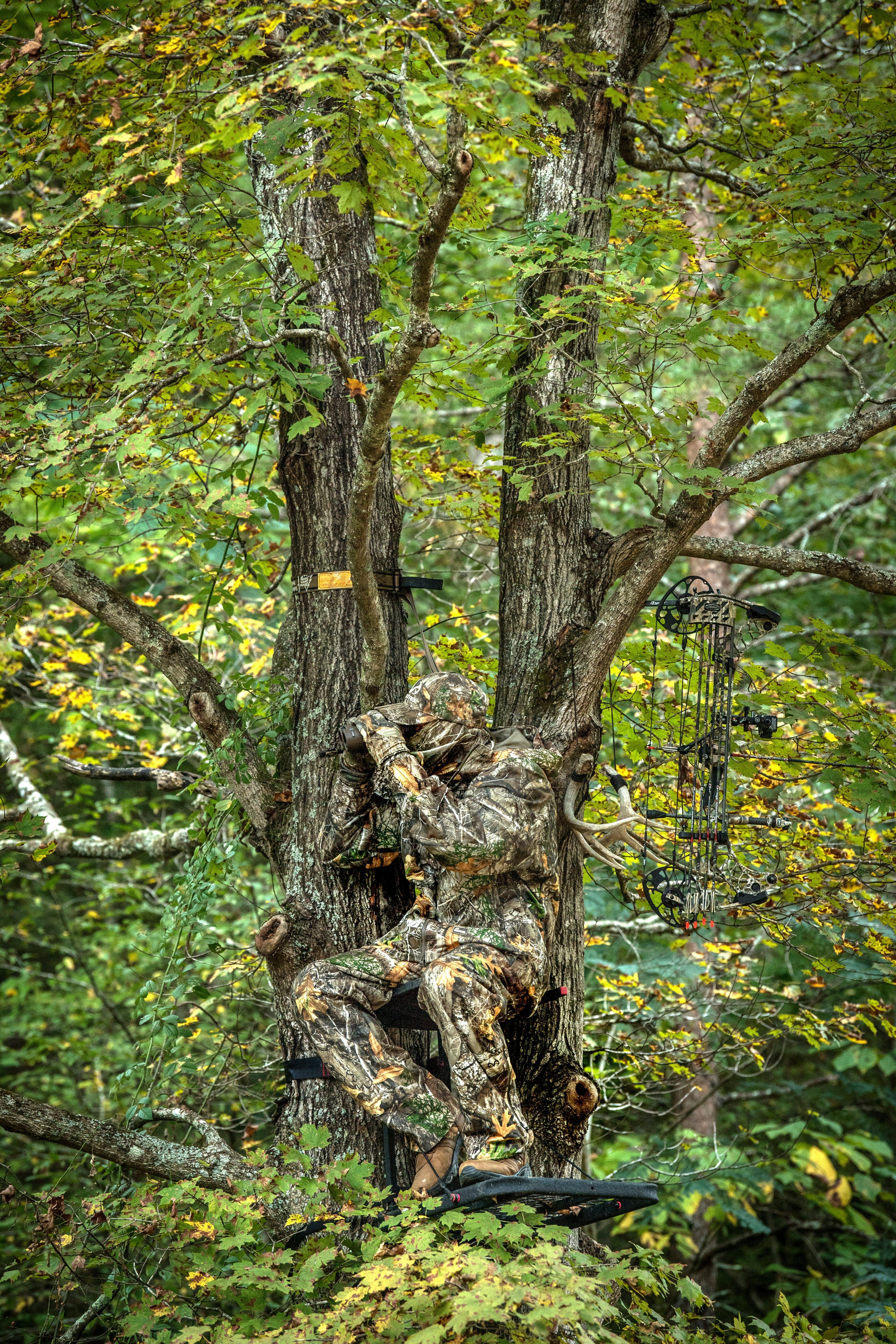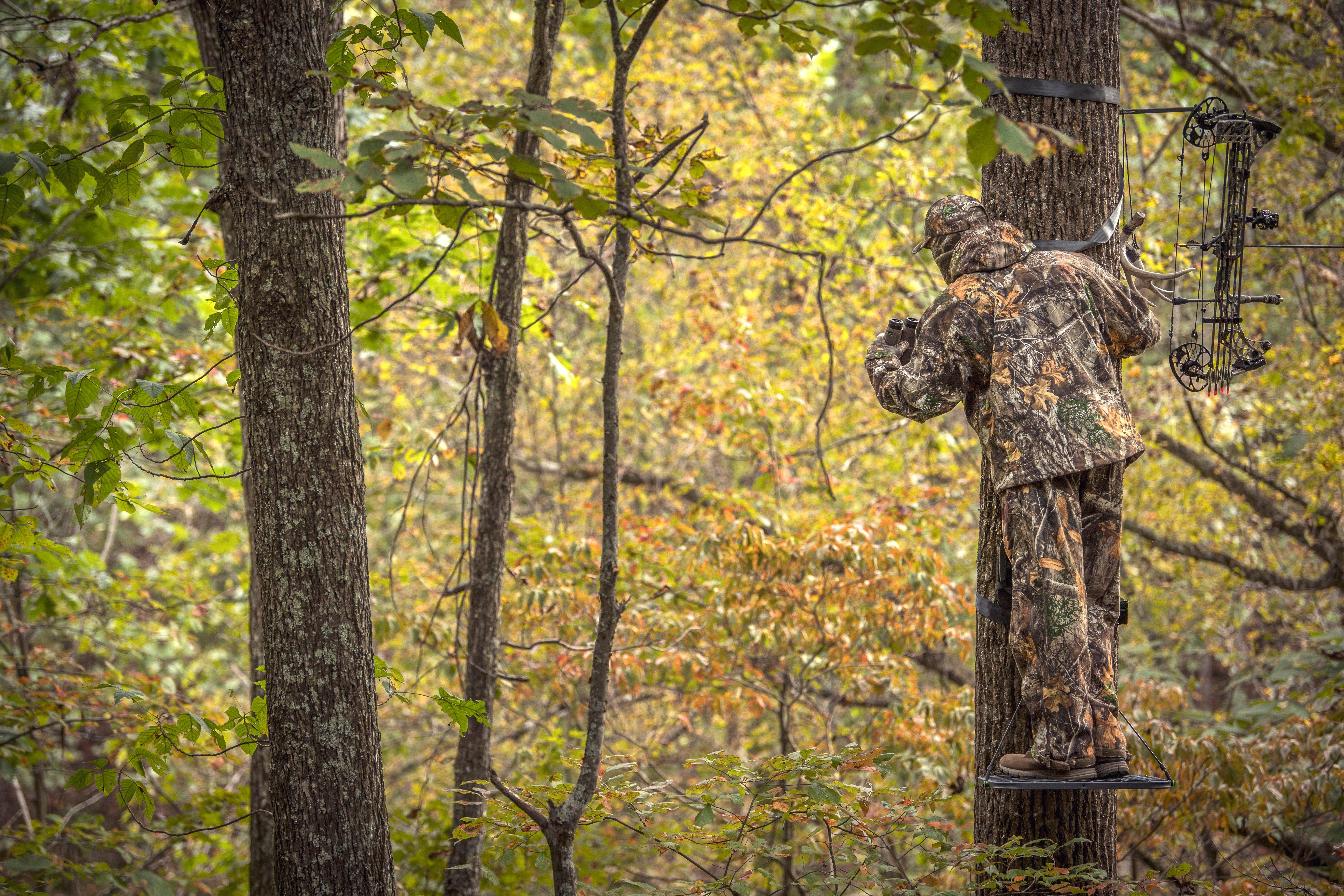Careful observation and sneaky strategies can put an early-season monster in your lap
September provides a great opportunity to kill a whopper buck with your bow, especially out West, where whitetails live and thrive in the brushy river bottoms that edge fields of alfalfa or barley. This is particularly true on lightly pressured private lands, such as a lease I’ve hunted on Montana’s Milk River for many years. But you can shoot a big deer early in the season on land that’s hunted harder, too, with some tricks.

Spend plenty of time using the binos. Deer can easily go unnoticed in heavy foliage. Image by Bill Konway
Glass, Glass, Glass
If you set up on a hill and use a binocular and spotting scope to observe a pig of a buck coming to a crop field several consecutive evenings, you have located a major feeding zone within that deer’s core area. Your target buck, along with other bucks and does, will come to and leave that field like clockwork. But they will use different trails on different days, depending on wind direction. Keep watching the deer and monitoring the daily winds until you know where the buck most often travels during a west wind, and which trail he’ll likely use during a south wind, for example. Then devise a treestand strategy.
Field-Side Stands
Drive into a field at midmorning, when does and bucks are tucked neatly into their beds a half-mile or more back in the brush and timber. In ranching areas, deer are used to the sound of vehicles. Drive slowly along the field edge, think back to your scouting with glass, and locate the most heavily used doe trails. Coming from deep in a bedding area, most bucks will walk on the same paths the does use, but as they approach a feeding area, big deer will often pull a detour the last 50 to 75 yards or so and pop out into a field alone, often on the upwind side of a trail. That way, if they see or smell danger, they can curl back and melt away in the cover undetected. Remember that when you’re hanging a stand for a 30-yard bow shot.

Don’t forget about bachelor groups that might still be running together. Image by Bill Konway
Hunt a Waterhole
When it’s hot during afternoons, in the 70s or 80s, hunt over a fresh water hole. You might have 6 miles of river or creek channels on your land, but the animals like to drink at certain favorite spots. Look for lots of muddy tracks and well-pocked trails, and hang a stand accordingly. Sit for hours in the shade, or even all day if you can stand it. A big 8- or 10-pointer might sneak in for drink any time. Be ready, and shoot straight.
Track Bachelor Bucks
Every August evening that John Schmucker spotted the ginormous 36-pointer in a crop field, the buck was traveling with three smaller bucks. When Schmucker went out hunting with his crossbow on Sept. 30 that year, the first deer he spotted was one of those little guys. He knew the monster was close, so he got ready. When the giant appeared minutes later, John’s bolt was spot-on. The Schmucker buck, with a nontypical net of 291-2/8, is one of the largest archery bucks taken in Ohio.
John killed one of the nation’s all-time monsters in September by thinking and being smart. He remembered the makeup of that summer bachelor group and used that knowledge to his advantage. The lesson: As you glass and/or study trail-camera images of a buck group in summer, remember the makeup of the gang, because most of those bucks will run together throughout September and into October. If you spot one of the bucks, the others will be close, too.
Don’t Miss: HUNTER SHOOTS MONSTER BUCK AFTER HIS TRUCK BURNS DOWN










